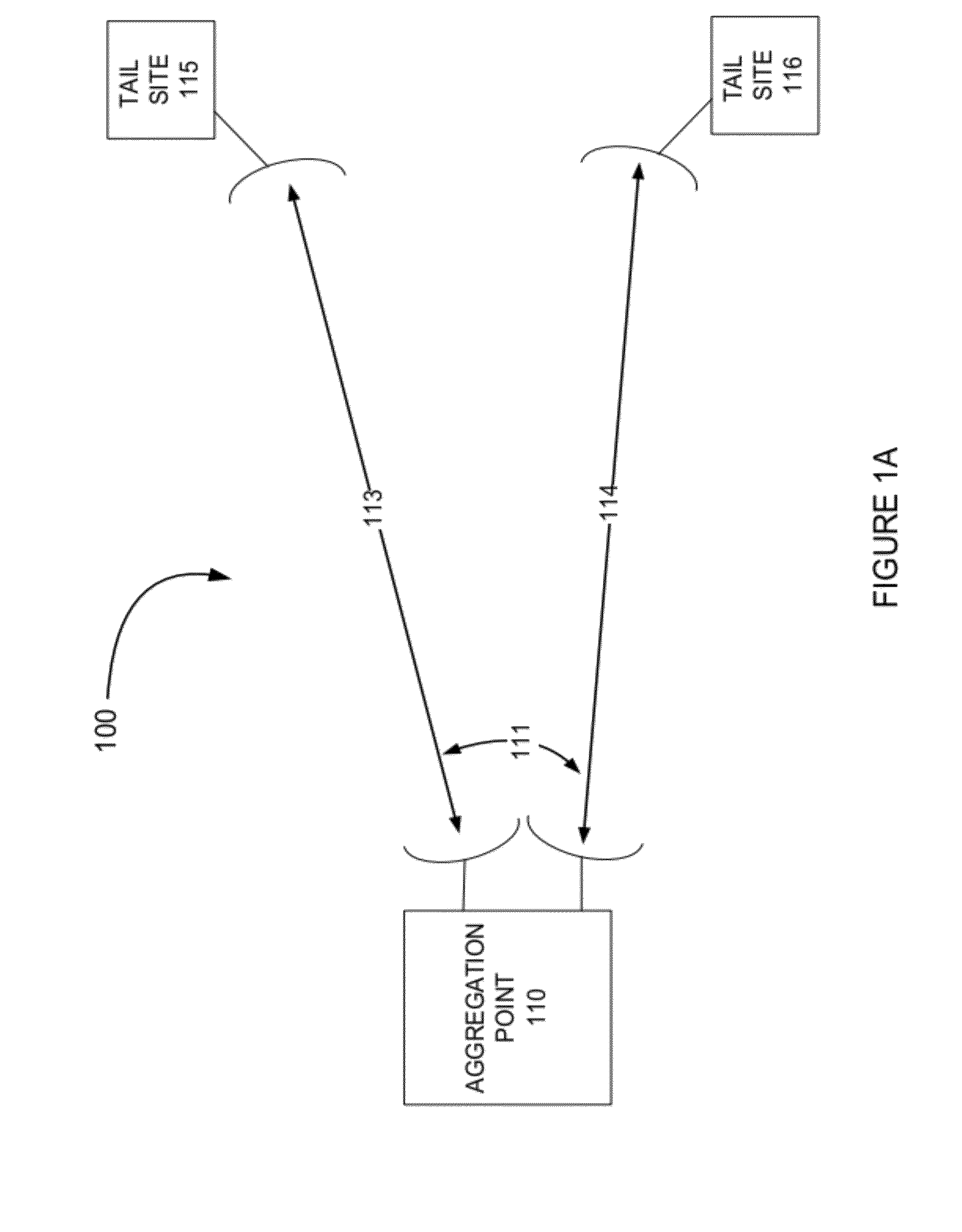Frequency reuse in wireless point-to-point communication systems
- Summary
- Abstract
- Description
- Claims
- Application Information
AI Technical Summary
Benefits of technology
Problems solved by technology
Method used
Image
Examples
Embodiment Construction
[0076]The present invention, in some embodiments thereof, relates to a wireless point-to-point communication system, and, more particularly, but not exclusively, to a single-carrier modulation scheme with a continuous transmission.
[0077]In describing the present invention, the tree-network-with-an-aggregation-point scenario, described in the Background section, will be used to demonstrate various features, for purpose of simplifying the description. The invention applies to the ring network scenario as well, and to other scenarios in which a node receives and transmits in directions which have a small angular separation.
[0078]Before explaining at least one embodiment of the invention in detail, it is to be understood that the invention is not necessarily limited in its application to the details of construction and the arrangement of the components and / or methods set forth in the following description and / or illustrated in the drawings and / or the examples. The invention is capable o...
PUM
 Login to View More
Login to View More Abstract
Description
Claims
Application Information
 Login to View More
Login to View More - R&D
- Intellectual Property
- Life Sciences
- Materials
- Tech Scout
- Unparalleled Data Quality
- Higher Quality Content
- 60% Fewer Hallucinations
Browse by: Latest US Patents, China's latest patents, Technical Efficacy Thesaurus, Application Domain, Technology Topic, Popular Technical Reports.
© 2025 PatSnap. All rights reserved.Legal|Privacy policy|Modern Slavery Act Transparency Statement|Sitemap|About US| Contact US: help@patsnap.com



